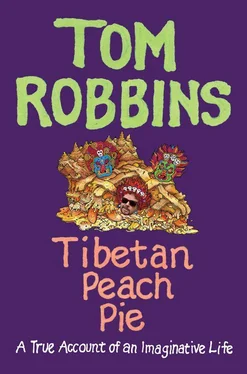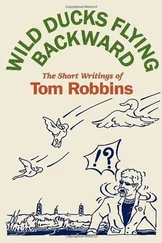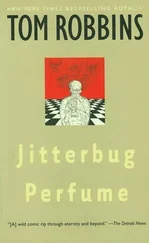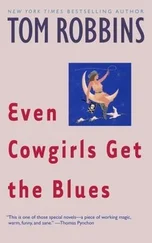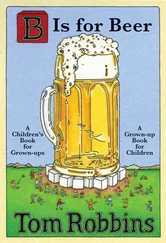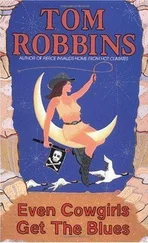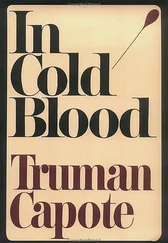A few years ago, however, an amateur herpetologist with experience in Appalachia offered what seemed like an even more startling explanation. He suggested that the snake that came charging so fiercely down the embankment was not the same snake that had gone up it.
“Eastern diamondbacks often live in pairs,” he said, “especially during mating or brooding season. Could be that either the male or the female took it upon itself to go out of its way to show it wasn’t going to tolerate any threat to its mate.”
Had the cold-blooded reptile charged down that bank, risks be damned, to avenge the stoning of its partner, to demand satisfaction for the offense and intrusion? Had it died for honor? For love ? If true, that casts the whole episode in a very different light: no longer just extraordinary and mysterious but romantic. In other words, right up my nothing if not serpentine alley.
My father was helping to string a new electrical line from Lenore up the mountain to Blowing Rock when the right-of-way crew flushed a good-size rattlesnake from its den. One of the workers pinned down the viper’s head with a shovel while a companion yanked out its fangs with his pliers. The agitated but now harmless snake they then stashed in the large wooden toolbox in the bed of their truck.
After work, back at the Lenore inn where the crew was lodged, they dispatched the cook’s helper, a colored man, out to the truck to retrieve “a mess of huckleberries” they claimed they’d picked that day. “They’re in the toolbox,” they told him, expressing a keen desire for huckleberry pancakes.
Much to the amusement of the jokers at the inn, there soon erupted a terrified scream, followed first by the crunch of running feet on the gravel drive, then the flap-flop of loose shoes disappearing down the highway. The poor fellow might have run all the way to Africa for all they knew because he never returned to the inn.
At least that’s how the story went. My father was a resolutely honest man, seldom disposed to narrative embellishment, yet it’s difficult not to detect in this anecdote, especially its climax, a whiff of the apocryphal. And it’s impossible not to detect the odor of racism.
Race, in those days, was hardly in the forefront of Blowing Rock consciousness. Not a single African American lived in the town or its environs. Even the wealthy summer people didn’t bring along their black servants when they came for the season, finding it cheaper and less bothersome to hire maids and other help from the local white population. All the blacks in my frame of reference were in the movies; and whether it was a sophisticated dancer such as Bill Robinson (hey, he was cool enough for Shirley Temple), a figure of fun such as Buckwheat in “Our Gang” comedies, or the native tribesmen (so strange, so far away) who shared the jungle with Tarzan, they lacked any relevance in my daily life.
Of course, I’d heard the occasional “N-word,” and while I realized it wasn’t exactly a compliment, even that epithet could possess a degree of ambiguity to me back then. For example, the time dear Aunt Mary expressed alarm at the way I’d dressed myself that morning. “Lordy mercy, Tommy! You can’t go around wearing red and orange together. Those are nigger colors.”
I have no idea how Aunt Mary came by that interesting piece of fashion information, but I do know that more than twenty years later, when I was at a civil rights gathering in defiantly segregationist King William County, Virginia, I noticed that the only person of either race wearing red and orange was me.
On one of our honeymoons, my wife Alexa and I rode elephants from northern Thailand to the border with Burma (for both humanitarian and poetic reasons, let’s refuse to call it Myanmar), a trip, at pachyderm pace, of three-plus days. Lumbering along atop an elephant’s head is not quite the wild, free, ecstatic experience it appears to be in Tarzan movies or the circus. For one thing, the elephant’s hair, though short, is stiff and wiry. One feels as if one’s posterior is bouncing on a beanbag chair made of steel wool.
In addition, elephants are given to cooling off (and it was summer in Thailand) by frequently misting themselves with any available water, often from a ditch. The rider, naturally, is sprayed along with his or her mount. It’s actually refreshing — until one begins to notice that the spray contains a certain amount of mucus. An elephant sprays with its trunk, which is, one is eventually reminded, its nose. At the end of each day, my bride and I were covered with a thin, slick coating of elephant snot.
Let’s forget viscid nasal secretions, however. I’ve been talking about snakes, and it happened that one afternoon a very long, very heavy serpent crossed the trail in front of our pachyderm party. One of the elephant drivers chased it down and dispatched it with his machete. We were told it was a sing snake. Sing is the Thai word for “lion.” If you’re a consumer of imported beers, you may recall that Thailand’s national brand is Singha. “Singha” was the name of a powerful lion figure from Southeast Asian mythology, although the beer, being a meek Buddhistic brew, seems more representative of bunny rabbits than of the king of beasts. Sing? Ha!
At any rate, our guide mentioned that the elephant drivers would be eating the sing snake for their dinner, whereupon I insisted that I must have some, as well. So, the men hacked off a chunk about seven inches in length, weighing about half a pound; wrapped it in a banana leaf, and, when we made camp, presented it to our cook.
The cook proceeded to prepare it nicely with sticky rice, bamboo shoots, and, as is the local custom, enough red chili paste to give heartburn to the Human Torch. Having de-snotted ourselves in a river, Alexa and I sat down on a palm log, bowls on our laps, chopsticks in hand, our hospitable palates poised to welcome in a culinary stranger.
Well, I can truthfully note in my résumé that I have dined upon lion snake. But what does lion snake taste like? I have no idea. Definitely not like the proverbial chicken — unless that chicken had just reentered Earth’s atmosphere. Every one of my nine thousand taste buds was preoccupied with trying to protect itself from third-degree burns. For at least an hour after dinner, I felt as if I’d been gargling napalm, and as an antidote, no amount of Singha beer could cut the mustard.
In the African nation of Namibia in 2004, I was struck by a black mamba, one of the world’s deadliest reptiles. Compared to a black mamba bite, a rattlesnake bite is little more than a hickey. (Refer to Barbara Kingsolver’s splendid novel The Poisonwood Bible for a graphic description of the accumulating physical horrors a black mamba victim usually experiences in the fifteen minutes or so between the bite and death.)
Obviously, since I’m writing this account, I wasn’t bitten. The strike missed. It missed because the open electric cart in which my guide and I were seated (we had ridden out in the bush to observe up close and personal a mother and baby rhinoceros) lurched forward inches out of fang range at precisely the right instant. Suffice to say we didn’t stick around for a second chance. In black mamba baseball, it’s one strike you’re out.
The mamba was long, slender, and graceful, and in striking it rose so high it was virtually vertical, as if balanced momentarily on the tip of its tail. It resembled a self-propelled licorice whip from the Marquis de Sade’s candy shoppe, a sleek six-foot bold italic exclamation point meant to emphasize a single message: DIE! DIE! DIE!
As thrilled as I was to find the incident in the hours following its agreeable outcome, it was also, believe it or not, to arouse in me a lingering sibilation of romantic nostalgia: the fond memory of another black snake in a very different context from an earlier time.
Читать дальше
